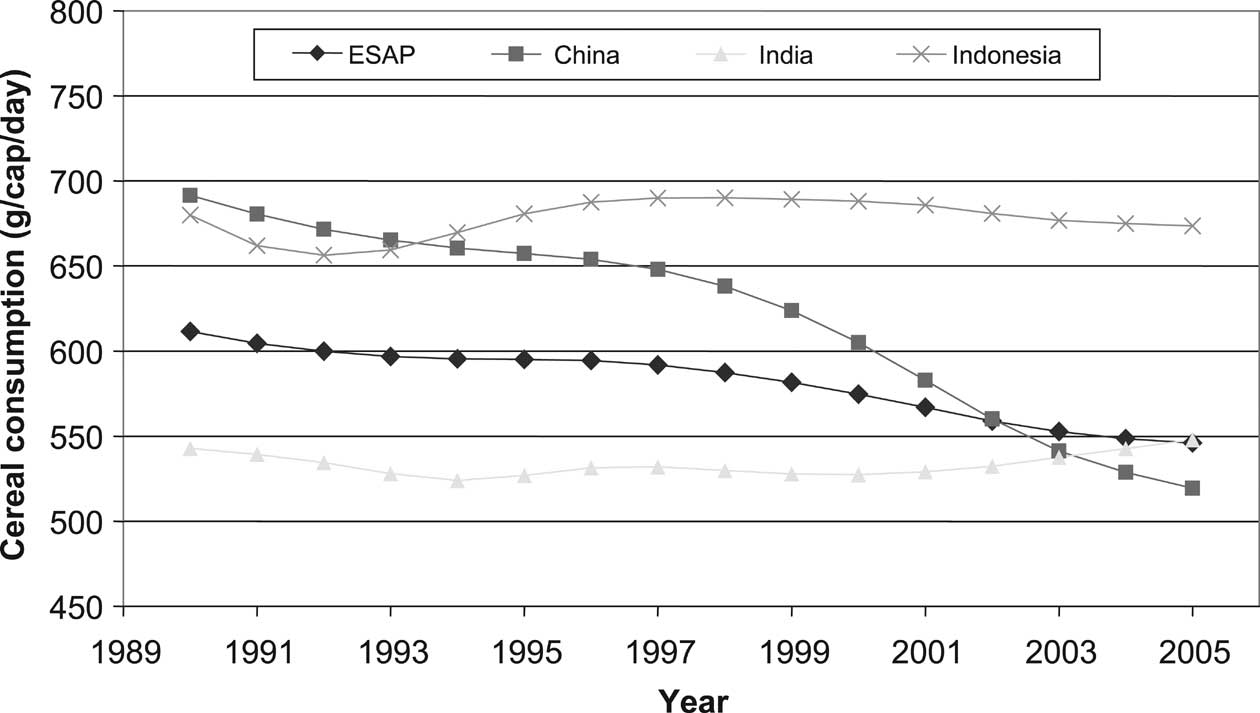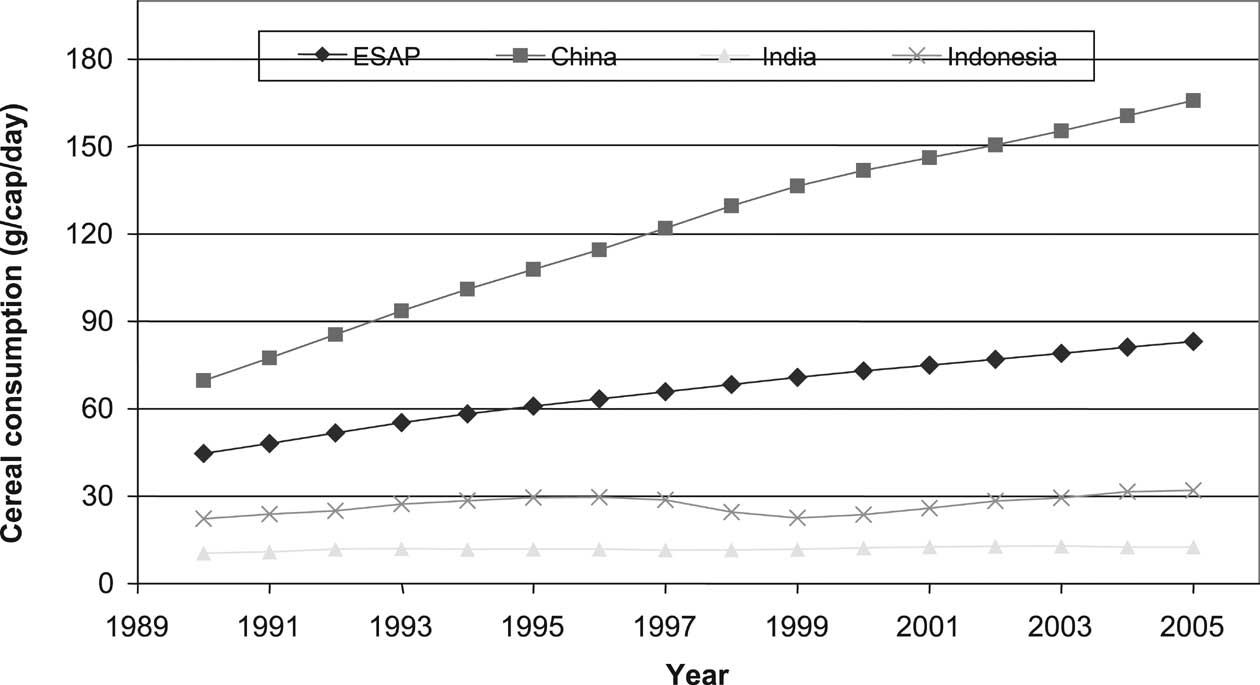
| Previous | Return to table of contents | Search Reports | Next |
| « Back to weltagrarbericht.de | ||
50 | East and South Asia and the Pacific (ESAP) Report

Figure 2-8. Cereal consumption per country in ESAP, 1995-2005. Source: FAO, 2006a
Green Revolution. Deficiency of vitamin A affects at least 40 countries. Out of an estimated 14 million with resulting eye damage, vitamin A deficiency blinds up to half a million preschool children each year. Important recent research shows that improving vitamin A status in children in deficient populations reduces mortality among young children by almost one-quarter. Vitamin A supply in some parts of South Asia is so low that deficiency is almost inevitable. The extent of stunting, underweight and wasting in women in developing countries shows that these problems are extensive in developing countries of Asia, particularly low body weight and thinness. Malnutrition in women is generally associated with low birth weight. This has intergenerational effects; malnourished women have small babies, who grow up to be small mothers. |
|
erably ahead. Within India, the relatively low rate of malnutrition in Kerala, one of the poorer states, was parallel to China. The percentages of underweight preschool children were 58.5% in South Asia, 31.3% in Southeast Asia and 21.8% in China in 1990. In 1990 South Asia had 101.2 million underweight preschool children, Southeast Asia had 19.9 million and China 23.6 million (Martorel, 2002). Technology and access to technology and innovation did not benefit many poor people in South Asia. Technology development was geared to market pressure and the needs of the industrial world, not to the needs of countries that had little purchasing power. |

Figure 2-9. Meat consumption per country in ESAP, 1995-2005. Source: FAO, 2006a
| Previous | Return to table of contents | Search Reports | Next |
| « Back to weltagrarbericht.de | ||